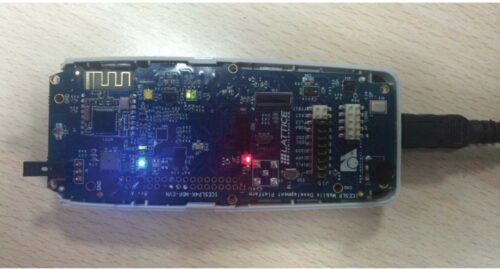Lattice Semiconductor offers a user-friendly reference design that integrates remote control functions into various devices.

Infrared (IR) Remote Transmitters (Tx) and Receivers (Rx) are pivotal for wireless control and communication over short distances. Their primary function is to offer users a convenient, wireless means to control various devices, including televisions, air conditioners, and audio systems. This short-range communication ensures that the device-specific commands do not interfere with distant devices, maintaining a dedicated control mechanism. Lattice Semiconductor offers IR remote Tx/Rx reference design, a quick and straightforward way to integrate remote control functions into mobile devices and consumer electronics.
The reference design comes equipped with in-built hardware interfacing, handling all essential aspects for both IR receiving and transmitting. This incorporates handling the intricacies of pulse width modulation (PWM) timing and converting protocols to a Serial Peripheral Interface (SPI) or Inter-Integrated Circuit (I2C) bus for seamless integration with an application processor. The reference design can be readily used in its current form or tailored to meet specific application needs. Presently, the design supports various IR codes, including those from Sony and Philips, and also features a self-learning IR remote design for enhanced flexibility. The design features configurable carrier frequency and unique self-learning capability. Additionally, the interface is structured with a 16-bit address and an 8-bit data configuration, ensuring versatility and adaptability in its applications.
The IR remote control reference design operates at a default system frequency of 27 MHz and includes a power-on reset capability. The core of the design works at a voltage of 1.2 V while supporting I/O voltages of 1.8 V and 3.3 V. The design encapsulates this in a 25-pin WLCS, measuring 1.69 mm x 1.69 mm with a pitch of 0.35 mm, ensuring it’s fit for industrial-grade environments, withstanding temperatures ranging from -40°C to 100°C. Its potential applications span various devices that can accommodate an IR receiver or IT transmitter. This includes popular gadgets like smartphones and tablets and encompasses universal remote controls, highlighting its versatility.
The iCE40LM Philips IR Rx Solution is an intermediary between an IR Receiver Module and an application processor. It captures Rx data via a 3.3V I/O connection. This received data undergoes validation, is structured for the processor’s use, and then stored in a data FIFO for buffering. Similarly, the iCE40LM Sony IR Tx solution is an intermediary between an application processor and an IR LED. It acquires Tx data from the processor via the SPI bus. This received data is tailored for IR driver logic and stored in a data FIFO for buffering.
Lattice Semiconductor has tested this reference design. It comes with a Bill of Material (BOM), schematics, etc. You can find additional data about the reference design on the company’s website. To read more about this reference design, click here.





